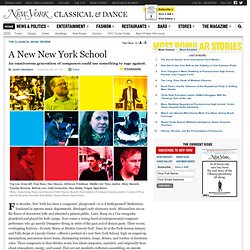

How to Generate a Viral Music Video in 5 Steps. By Olivia Solon, Wired UK For musical artists seeking to raise their profile, having a video that goes viral can telescope their career in a matter of weeks.

Some bands, such as OK Go, have made a career out of creating viral videos — using them as leverage for live-ticket sales and to generate sponsorship. Wired.co.uk attended an event run by MusicTank last week, titled “It Started With a Click: How to Spawn a Viral Hit.” Chaired by MusicTank’s Keith Harris, the panel included Beggars Group‘s head of digital marketing, David Emery; The Viral Factory‘s strategy director, Matt Smith; PIAS Entertainment Group‘s head of digital marketing, Darren Hemmings; Muzu TV‘s European head of marketing, Rob Gotlieb; and filmmaker Dan Nixon. They discussed how best to ensure that your music video achieves viral success. Here are five key pieces of advice from the event: Have a Strong Creative Idea ‘Never underestimate the power of kittens.’ Forget about focus groups or your core demographic. Justin Davidson on the New Generation of Composers. For decades, New York has been a composers’ playground—or is it battleground?

Modernists, hunkered in uptown music departments, developed early electronic tools. Minimalists sat on the floors of downtown lofts and attracted a patient public. Later, Bang on a Can renegades plundered and played for both camps. Now comes a roving band of entrepreneurial composer-performers who go merrily Dumpster-diving in styles of the past and of distant parts. Three recent, overlapping festivals—Ecstatic Music at Merkin Concert Hall, Tune-In at the Park Avenue Armory, and Tully Scope at Lincoln Center—offered a portrait of a new New York School, high on amped-up minimalism, percussion-heavy beats, shimmering textures, loops, drones, and washes of electronic color.
The quintessential opus of the new New York School is Tyondai Braxton’s 45-minute suite Central Market, selections from which got their New York premiere during the Tully Scope Festival earlier this month. Musica Globalista: the farewell essay by Simon Reynolds, 'Here Comes Everything' *Simon is prescient as usual: the music section of this blog will in fact be taken over for another month by another music-critic guest star.

And boy does our new guest ever have a lot on her mind. — bruces This is the last in this summer’s series of guest blogs from me c/o Beyond the Beyond. But before I hand over to Geeta Dayal, I’d like to say ‘big up’ to my host Bruce and close out with something of an epic: a sprawling almost-essay looking at Retromaniacal-parallels in a realm of music that’s outside my customary remit–contemporary classical composition. Last week I stumbled across a piece by New York magazine’s classical music critic Justin Davidson, a critique of what he termed “a new New York School” of composers whose eclecticism and border-crossing echoes the downtown movement of the 1970s.
The article is actually several months old (but in this atemporal world, who cares?) The piece’s subtitle is: “An omnivorous generation of composers could use something to rage against”. The New Challenges of New Thinking. Photography by Tom Hayes By Peter Gilbert The blog responses to Justin Davidson’s provocative piece, “The New New York School” from March 20, 2011 in New York Magazine—an appraisal of the music of several young New York composers—are so far coming down almost unanimously against Davidson’s thesis that our contemporary inclusiveness gives young composers nothing to rebel against, leaving their energies scattered and ultimately diluted, no matter how much energy the pieces exude on their surfaces.

He is called out as being an old school modernist, entrenched in a decrepit idea—that making something new requires rejecting the formerly new. More mixed is the response to the assertion that much of the music from the New York composers in their thirties, which he dubs the “New New York School”, ultimately sounds the same. Critics are supposed to connect dots to a bigger story and if Davidson feels that something is missing in the musical zeitgeist of this time he is supposed to point it out.